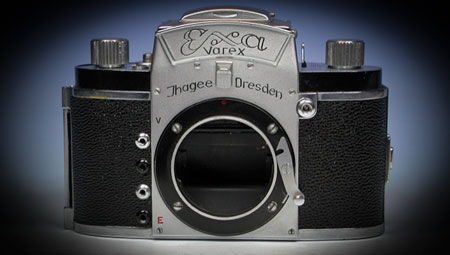Canon and Nikon, world’s biggest, most powerful camera makers, tried to avoid the inevitable since the birth of system cameras. With the recent launch of own lines of compact system cameras they finally gave in to reality: After 70 years of SLR rule, a changing of the guard takes place in the camera market. The mechanically complex SLR will irrevocably be replaced by smaller, lighter cameras without the antiquated mirror, and yet with interchangeable lenses.

Today, Olympus, Panasonic, Fujifilm, Sony, Samsung, Pentax — and recently Canon and Nikon — , they all have system cameras for this year’s Photokina, marking the end of a technical principle that dominated the camera market for more than seven decades.
The more simple, more compact system cameras without the traditional viewfinder replace the mighty SLR that dates back to 1936 when German inventor Karl Nüchterlein made history as the constructor of the first successful 35mm SLR camera that went into serial production.
Nüchterlein created a type of equipment that remained a bestseller to this day. It was based on the prism finder; a five-sided reflecting pentaprism to deviate a beam of light by a constant 90°.

Especially in the Asian markets as many new hybrid type of cameras are sold as the classic, large and cumbersome SLRs (a.k.a. DSLRs and HDSLRs). Western markets still lag behind, but sales nearly double each year.
The new breed of compact cameras, relying on high-quality optics and flawless finish, has little in common with the old rangefinder. Their sensors are of the same make, light-sensitivity and quality as in their bulkier siblings. Resolution, low-light performance and high ISO are no longer a reason to stick to DSLRs. Even traditionalists who dearly miss an optical viewfinder might enjoy the possibilities only live view can offer.
The new class of mirrorless system cameras has no common name yet. They’re called MILC, MSC, EVIL. Each maker refers to an own cryptic acronym. But together they dominate the list of new cameras presented at Photokina 2012. More mirrorless system cameras are presented than such with mirror. Just two years ago, the ratio was reversed.
System cameras don’t convince the pros yet as much as enthusiasts and the lifestyle market. Sophisticated, timeless and retro designs though guarantee not only steady sales growth. The mirrorless market is a boon to manufacturers’ margins. It’s significantly less expensive to produce a camera housing without the outmoded mirror mechanism.
While prices of DSLRs and point-and-shoots keep falling, mirrorless prices are positively rising. They’re not yet as expensive as a comparable high qualty DSLRs, yet buyers seem to be willing to pay a premium for quality finish and the latest bells and whistles.


